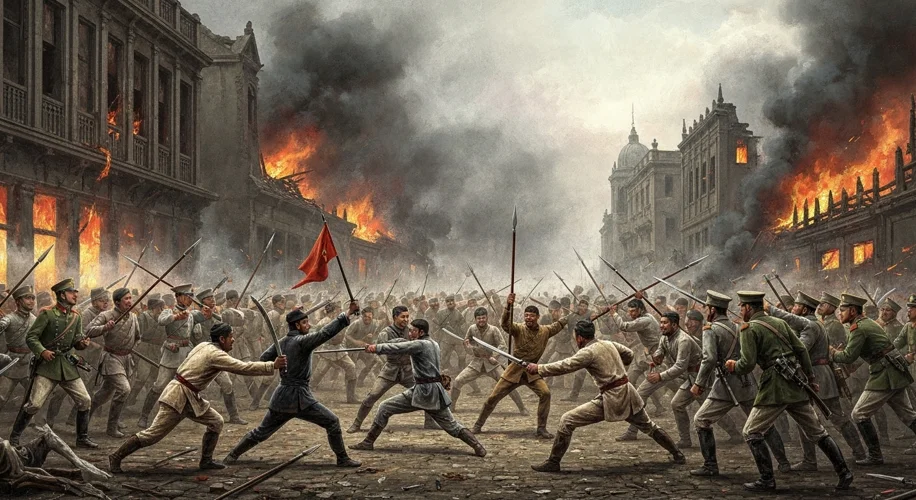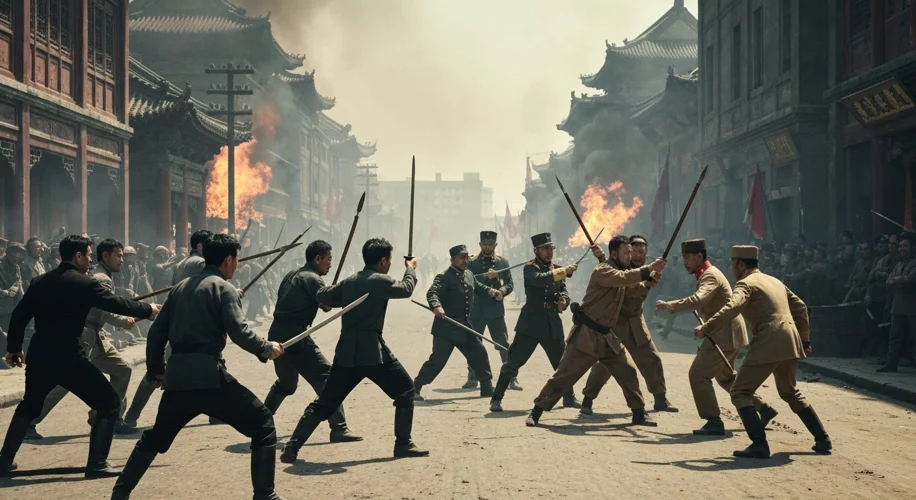The year is 1900. The air in Peking (now Beijing) is thick with tension, a palpable mix of fear and defiance. Outside the hallowed walls of the Forbidden City, an ancient empire is convulsing, its people rising up in a violent storm against the encroaching tide of foreign powers. This was the Boxer Rebellion, a desperate, bloody cry from the heart of China against centuries of humiliation and exploitation.
For decades, the Qing Dynasty, once the magnificent rulers of a vast empire, had been weakening. Internal strife, corruption, and a series of devastating wars, including the humiliating defeat in the First Opium War (1839-1842), had left China vulnerable. Western powers, along with Japan, carved out spheres of influence, dictating terms of trade, extracting concessions, and treating China as a playground for their imperial ambitions. Missionaries, often protected by their own governments, arrived in large numbers, challenging deeply held Confucian traditions and local customs. To many Chinese, they represented not spiritual salvation, but an arrogant cultural invasion.
This simmering resentment found its voice in a movement that would become known as the ‘Boxers’. Officially calling themselves the ‘Society of Righteous and Harmonious Fists,’ they practiced martial arts and believed they were imbued with a supernatural ability to repel foreign bullets. Their anti-foreign, anti-Christian fervor resonated with peasants and commoners who felt marginalized and dispossessed by the foreigners and the increasingly ineffectual Qing government. The slogan that echoed through the streets was simple, yet potent: “Support the Qing, exterminate the foreigners!”

The rebellion, which truly ignited in 1899, rapidly spread across northern China. They attacked foreign legations, churches, and railway lines, their numbers swelling into the tens of thousands. The international community, already on edge, responded with alarm. An international coalition was swiftly assembled, a veritable ‘Eight-Nation Alliance’ comprising Britain, France, Germany, Russia, the United States, Japan, Italy, and Austria-Hungary. Their objective was clear: to crush the rebellion and protect their interests – and their citizens – in China.
What followed was a brutal suppression. The Eight-Nation Alliance forces, armed with superior weaponry and military might, marched on Peking. The siege of the legation quarter was a desperate struggle, with foreigners and Chinese Christians trapped, awaiting rescue. When the allied forces finally broke through in August 1900, the scene was one of utter devastation. The city had been looted and ravaged, the Boxers and anyone suspected of aiding them were summarily executed. The aftermath saw the imposition of the Boxer Protocol in 1901, a treaty that imposed a massive indemnity on China, further weakening the already fragile Qing Dynasty and cementing foreign control over the nation.
The Boxer Rebellion stands as a tragic testament to China’s struggle for sovereignty in the face of overwhelming foreign pressure. It exposed the deep-seated resentments within Chinese society and the profound sense of national humiliation felt by its people. While the Boxers’ methods were violent and their beliefs often rooted in superstition, their uprising reflected a genuine desire to reclaim China’s dignity and resist foreign domination. The rebellion ultimately failed to achieve its immediate goals, but its echoes resonated through the subsequent decades, contributing to the eventual collapse of the Qing Dynasty in 1911 and fueling the flames of Chinese nationalism that would shape the 20th century and beyond.
It was a painful chapter, a violent clash between an ancient world and a rapidly modernizing West, a stark reminder of the devastating consequences when empires collide and the desperate fight for self-determination.

